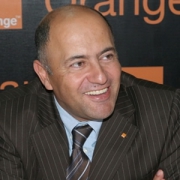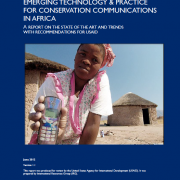Woven Garments Harvest Energy, Provide Light
Maria Carillo sits at a table weaving a beautiful Huichol textile and talking to her mother who threads a needle to work on her intricately beaded piece of artwork. The sun is beginning to lower in the Mexico’s western sky and the looming darkness threatens their ability to work. These pieces must completed and sold tomorrow in the market nearby so the family can pay for Maria’s school.
Maria set down her needles, picks up her nearby woven handbag, and hangs it high above the table where her and her mother sit. After being switched on, the handbag produces a warm glow of light in the darkened hut, and work resumes.
She is using the Portable Light Unit, a simple, versatile textile with tiny solar nano-technology cells that can be woven into energy harvesting bags, or other textiles, using local materials and traditional weaving and sewing techniques.
Maria is Huichol or Wixáritari, a semi-nomadic indigenous group located in western central Mexico living in the Sierra Madre Occidental mountain range, internationally recognized for their production of intricate and colorful textiles.
Similar to the two billion other people who live without access to electricity, the Huichol people live in rugged terrain, where the centralized electrical distribution is costly to implement and maintain. Building the infrastructure often causes irreparable cultural and social damage for indigenous peoples as well as environmental damage to their lands. The combined lack of resources, and damage to their homes, leaves them inadequately prepared and economically displaced.
The Portable Light Project, a non-profit initiative led by Kennedy & Violich Architecture and Global Solar Energy, aims to combine clean energy and lighting with local indigenous textile production. This helps local communities adopt the new technology, adds value to it by including their own work, and heightens economic production; all without removing the Huichol from their traditional way of life.
Miquel Carillo, Huichol Community Leader in Santa Catarina describes the frustration of their hardships without a light source:
We don’t have light. We can only work during the day. Nobody can do anything. We just wait for the sun to come up again
The Portable Light project provides kits containing a flexible, two-watt solar film, rechargeable battery, USB port, and an LED light and training on how to weave them into garments.
By integrating the solar panels with the woven textiles, electronic devices can be easily charged while people go on with their everyday work; and fully charged LED lights allow four hours of visibility, enabling communities to work and study after dark.
The integral USB port is used to charge cell phones, which connects Huichol artisans with art dealers and stores in urban areas without removing them from their homes.
The Huichol people and indigenous weaving projects are not the only way Portable Light Units are being utilized to better the livelihoods of communities in developing regions.
A environmental education program in Paso del Istmo Biological Corridor in Nicaragua uses the bags to help protect endangered sea turtle nests. Villagers work as rangers to prevent turtle poaching at night. They use the Light Units to charge cell phones so they can communicate the location of nests, and women use them to build eco-tourism businesses at night.
In rural Haiti, the bags are being used to support the NGO Maison De Naissance, a network of traveling health workers who provide prenatal and basic medical care. Health workers and midwives use the Portable Light Units as a renewable light and power source for house visits and night procedures. The USB port is used to charge cell phones and medical devices, connecting them with physicians at the clinics who have better intel to help make accurate diagnoses.
The Portable Light Project is a promising example of how to combine economic productivity with environmental conservation in remote areas, but some critics remain skeptical.
Few argue that there is not an economic model to produce mass amounts of the Portable Light Units to supply the huge demand for electricity in rural areas. Others contend that the garments will not be able to withstand rugged conditions common in developing regions.
Frederic Krebs of the Rios National Laboratory for Sustainable Energy in Denmark who designed a low cost, plastic solar lamp for Africa, expressed his hesitancy. He maintains through his research that a high degree of ruggedness is required before portable solar lights can help people developing regions. It was in Krebs opinion that such textiles are, “simply not wearable enough yet.”
These are components of the Portable Light Project that need to be addressed before it can be used all throughout developing regions. However, the Portable Light Project holds promise for bringing a renewable source of light into communities who otherwise have been sitting in the dark.













































